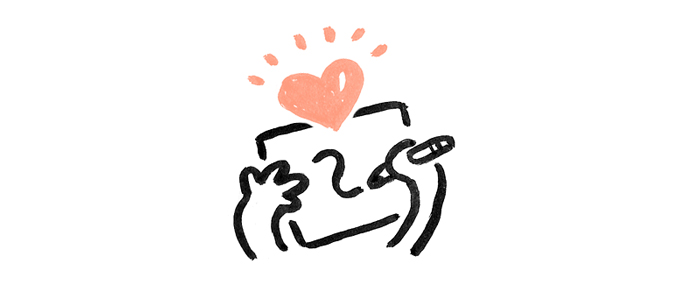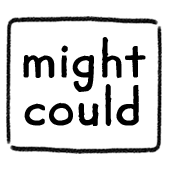
John Holt, an American educator who studied how children learn, defined education as “the game of trying to find out how the world works.” I believe that definition pairs well with art education too. I use my sketchbook as a way to figure out how the world works—both my inner world and the world around me.
Many artists do this, and I believe it’s key to discovering the ideas and thoughts that are deep down inside me. Because THOSE things are the things that make my art mine.
John Holt works primarily with children’s education, and often contrasts how children and adults approach learning something new:
“Children seek out meaning, which is to say, whatever helps them make the most sense of the world they live in… We do things backwards. We think in terms of getting a skill first, and then finding useful and interesting things to do with it. The sensible way, the best way, is to start with something worth doing, and then, moved by a strong desire to do it, get whatever skills are needed.”
–John Holt, educator
Children are fantastic learners, perhaps better than adults in many ways. And I believe we can to tap into that childlike way of thinking when we’re learning to draw. Here are four childlike characteristics that can help us cultivate a better artistic mindset.
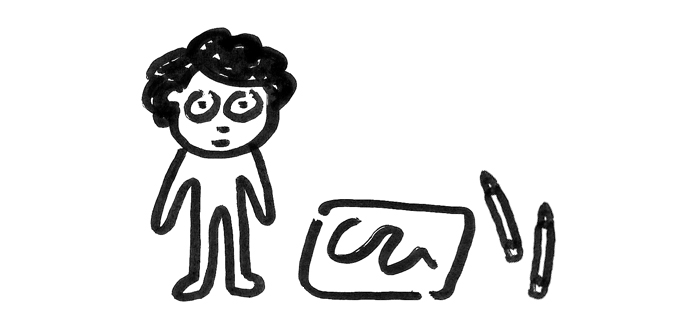
Forget your assumptions
Adults make assumptions constantly. We develop the ability to assume things because there’s so much data in the world that we can’t possibly process all of it constantly. Our brains would be overworked and eventually shut down if everything was constantly new and unknown.
Assuming things allows us to take a little shortcut and remember things we’ve already learned. For example, I can assume a furry, four-legged animal with a long nose, big ears, tail, and floppy tongue is probably a dog. I might be wrong on occasion—say, when I see a hairy pig from far away—but on the whole, this doggy assumption makes my life easier, and is right most of the time. I don’t have to analyze every dog I see, I can just assume quickly, “Oh yes, dog.”
That’s all well and good, but we adults have gotten so good at making assumptions that we often assume things that are harmful in the long run. Sometimes our assumptions can convince us of things that aren’t true, things that stop us from doing things we truly want to be able to do. And this happens all the time in the world of creativity and art making.
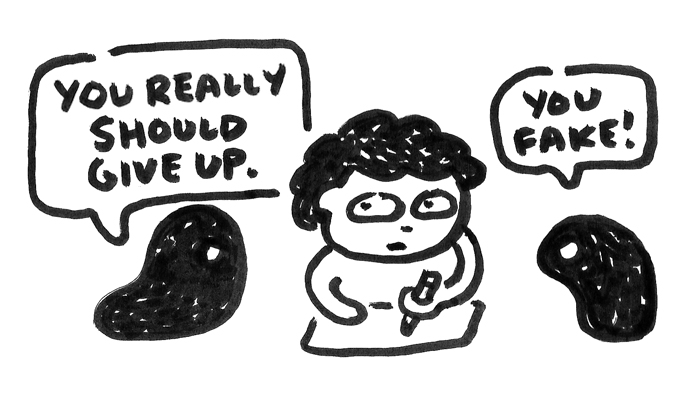
Common assumptions include “I’m not good enough”, “I need to learn more before I can ____”, “People like art that looks like ____”, “No one will like this”, “I’m not artsy enough to be an artist”, “My art is only good if someone will pay for it” etc.
All those assumptions are unhelpful and harmful to an artistic mindset. They are assumption you have learned—mostly from critics, competition, and comparison—but they debilitate your motivation, enthusiasm, and confidence. They make it really hard to draw.
Children, on the other hand, have not yet become masters of making assumptions. They’re still learning what’s a dog and what’s a pig, so they’re not as quick to assume one over the other.
They also haven’t learned to call art “good” or “bad”, so they don’t assume they’re not good enough to draw. They haven’t learned to assume what people like, so they just draw what they like. They haven’t learned about identity, money, or audiences, so they just explore and create with no assumptions. And if we can channel that childlike artistic mindset, our art can really thrive and grow.
“Be like a child. Use your eyes. Gag that teacher’s mouth inside your head, asking all those questions. Don’t try to analyze this thing, look at it, take it in…. The only thing to do [is] to turn off the questions and watch—like a child. Take it all in. See everything, worry about nothing.”
–John Holt, educator
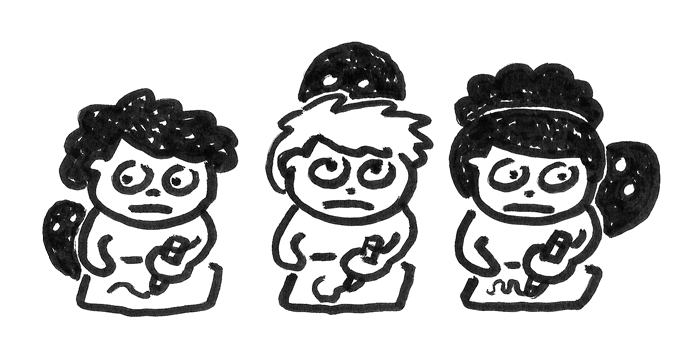
Delay Your Judgment
Another thing adults have learned to do quite well is pass judgment. Again, this was developed because it helps us as humans make it through life—literally. For example, we learned to judge certain colors of berries and mushrooms so we don’t eat the ones we know are poisonous and might kill us! So it’s an important skill that has served us well.
However, we’ve taken this skill way past the point of benefit. We now pass judgments over everything, and we are most critical of ourselves.
When making art, we’re extremely quick to unleash our inner critic. We hear that voice before our pen even leaves the page: “That’s no good”, “You’re really bad at drawing aren’t you?”, “This is the worst drawing I’ve ever seen”, “Wow, you are a terrible artist”.
These thoughts are completely normal, and happen to everyone, but they are not helpful. Your inner critic’s only mission is to protect your ego, and to do that it wants you to do just one thing: stop drawing.
Instead, if we can see our work clearly for what it is, not muddled and clouded by inaccurate and distracting thoughts, we can improve and grow. But if we’re constantly berating ourselves and beating ourselves up, how could we possibly keep going?
Children have not yet learned to pass judgment on everything around them. Perhaps they judge foods harshly, but when it comes to art, children tend to be very accepting and receptive to whatever happens to come out onto the page. They are drawing for the joy of drawing and are not stopping to judge whether what they’ve done is good or bad. They just draw.
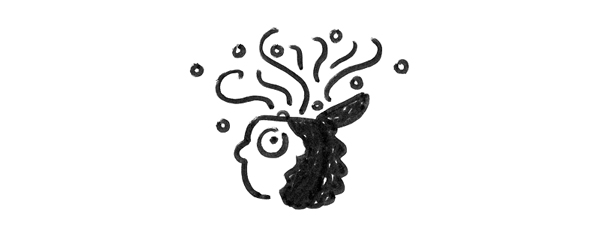
Have an Open Mind
Because children assume and pass judgments less frequently, they tend to have a more open mind than adults. They approach things with wonder and curiosity, rather than expectations and rules.
Perhaps the follow the rules mindset works for adults in many cases, but with art there’s no formula, there’s no almighty set of rules to follow. Art making is a process of trial and error, following your curiosity, and letting yourself be open to new paths.
Copying a piece of art might be straight forward, but making a new, original piece of art is a winding, confusing path. We never really know where we’re going when we start, and the only way to get somewhere new, somewhere interesting, is to have an open mind.
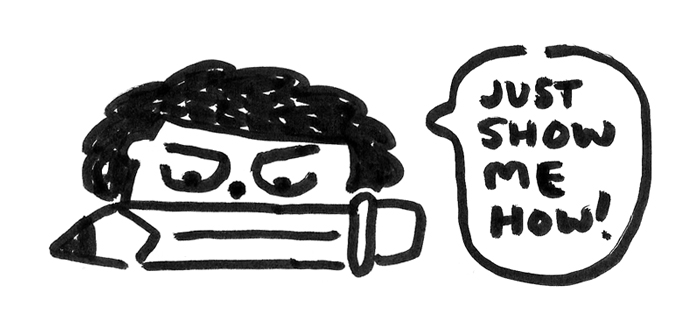
Be Patient
Perhaps you don’t think children are the shining example of patience, and in a lot of ways they’re absolutely not. But when it comes to learning new things they definitely are more patient than adults.
When adults approach learning something new, they expect to immediately be good at it, and are frustrated when they’re not. Adults pick up a pen after decades of not drawing and are mad they can’t draw as well as that artist over there who’s been drawing daily for years! It doesn’t make sense, but we often feel that way anyways. We’re not patient. We don’t want to put in the years and years of drawing and learning—we want to be good now.
Children, especially when it comes to drawing, do not think this way. They draw for the sake of drawing. They don’t draw to become good, they draw because they like drawing. And because of that dynamic, children end up drawing more and more and getting better and better, growing and improving at an enormous rate.
But those adults who don’t practice patience, and want to be good right now? Well, soon enough they figure out that’s not possible, and they quit. We have to be patient and allow ourselves the time to learn and grow.
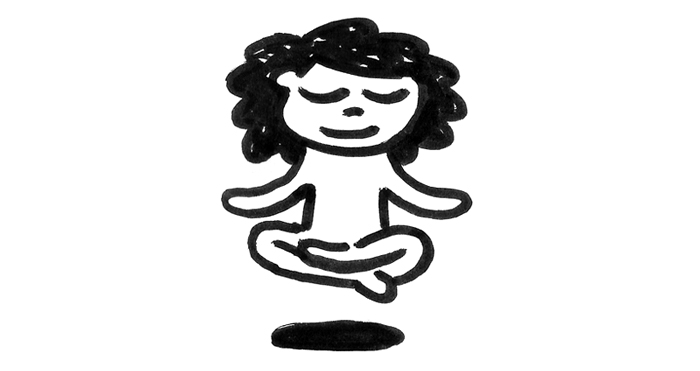
All About Mindset
With those four characteristics in mind, we come to an important conclusion, and one that I’ve been trying to make all along: Making art is not about technique—it’s about mindset.
“Of course it is the spirit in which you do a thing which makes it interesting, whether it is sweeping a room or pulling turnips.”
–Henry David Thoreau, writer and philosopher
Perhaps you’re thinking at this point that this all sounds pretty lazy. We should aim to draw like kids, not adults? How the heck is that going to help? You don’t want to just settle for being fine, you want to improve, you want to get better, you want to be great.
And there is absolutely nothing wrong with ambition and striving to be better. I want that too. And you can totally improve your art with this more open, childlike way. I’d actually argue that you’ll improve faster by thinking and drawing like a child than you would thinking and drawing like an adult.
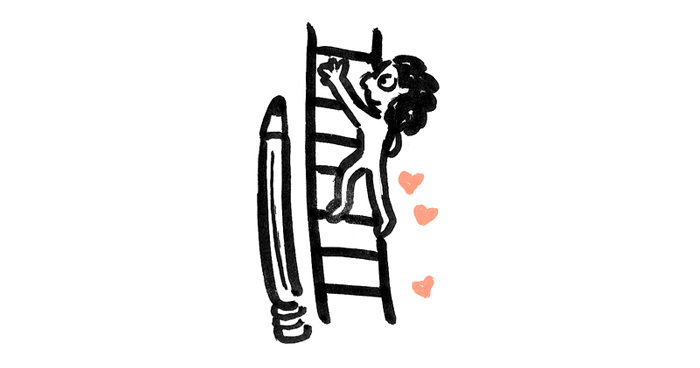
Because when we enjoy something, when we have fun, when we take away the pressure and judgment, we’re left with curiosity. And curiosity begs to be followed. It pulls and pushes us along. It’s not stagnant, it’s not complacent. Curiosity is constantly moving, going, finding, connecting, doing. Our curiosity wants to be be fed, and in return grows stronger and stronger.
Judgments, assumptions, closed minds, and impatience all hold us back—curiosity propels us forward.
The best way to improve our art is to love it not for what it could be, but for what it is. Children don’t love what they’ve drawn because it’s perfect or because it followed all the rules. Children love their art because they can see it clearly for what it is with no assumptions, judgements, or expectations. They see it with a curious, open mind, and that mindset brings them back to drawing again and again.
And as we all know, doing something again and again is what leads to improvement. We can’t grow by following expectations, forcing outcomes, or rushing through the process. Loving and accepting our art for what it is right now can take us farther than we could ever expect.
